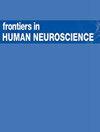通过自动语音分析检测多发性硬化症患者的疲劳状况
IF 2.4
3区 医学
Q3 NEUROSCIENCES
引用次数: 0
摘要
多发性硬化症(MS)是一种以中枢神经系统脱髓鞘和轴突变性为特征的慢性神经炎症性疾病。疲劳影响着大部分多发性硬化症患者,严重损害他们的日常活动和生活质量。尽管疲劳在多发性硬化症中很普遍,但人们对其发病机制却知之甚少,疲劳的测量仍然是一项具有挑战性的任务。本研究评估了自动语音分析在检测多发性硬化症患者疲劳方面的功效。多发性硬化症患者接受了详细的临床评估,并进行了全面的语音测试。我们的支持向量机模型使用了三种不同的自由言语任务特征和专有的认知评分,在检测疲劳方面的 ROC AUC 达到了 0.74。仅使用图片描述任务中的自由言语特征,我们的 AUC 为 0.68。这表明,特定的自由言语模式可用于检测疲劳。此外,认知疲劳与自由言语中较低的语音比率有显著关联(ρ = -0.283,p = 0.001),这表明它可能代表了多发性硬化症患者疲劳的一个特定标记。总之,我们的研究结果表明,对单个叙述性自由言语任务的自动语音分析为疲劳评估提供了一种客观、生态有效和低负担的方法。语音分析工具有望应用于临床实践,改善疾病监测和管理。本文章由计算机程序翻译,如有差异,请以英文原文为准。
Detecting fatigue in multiple sclerosis through automatic speech analysis
Multiple sclerosis (MS) is a chronic neuroinflammatory disease characterized by central nervous system demyelination and axonal degeneration. Fatigue affects a major portion of MS patients, significantly impairing their daily activities and quality of life. Despite its prevalence, the mechanisms underlying fatigue in MS are poorly understood, and measuring fatigue remains a challenging task. This study evaluates the efficacy of automated speech analysis in detecting fatigue in MS patients. MS patients underwent a detailed clinical assessment and performed a comprehensive speech protocol. Using features from three different free speech tasks and a proprietary cognition score, our support vector machine model achieved an AUC on the ROC of 0.74 in detecting fatigue. Using only free speech features evoked from a picture description task we obtained an AUC of 0.68. This indicates that specific free speech patterns can be useful in detecting fatigue. Moreover, cognitive fatigue was significantly associated with lower speech ratio in free speech (ρ = −0.283, p = 0.001), suggesting that it may represent a specific marker of fatigue in MS patients. Together, our results show that automated speech analysis, of a single narrative free speech task, offers an objective, ecologically valid and low-burden method for fatigue assessment. Speech analysis tools offer promising potential applications in clinical practice for improving disease monitoring and management.
求助全文
通过发布文献求助,成功后即可免费获取论文全文。
去求助
来源期刊

Frontiers in Human Neuroscience
医学-神经科学
CiteScore
4.70
自引率
6.90%
发文量
830
审稿时长
2-4 weeks
期刊介绍:
Frontiers in Human Neuroscience is a first-tier electronic journal devoted to understanding the brain mechanisms supporting cognitive and social behavior in humans, and how these mechanisms might be altered in disease states. The last 25 years have seen an explosive growth in both the methods and the theoretical constructs available to study the human brain. Advances in electrophysiological, neuroimaging, neuropsychological, psychophysical, neuropharmacological and computational approaches have provided key insights into the mechanisms of a broad range of human behaviors in both health and disease. Work in human neuroscience ranges from the cognitive domain, including areas such as memory, attention, language and perception to the social domain, with this last subject addressing topics, such as interpersonal interactions, social discourse and emotional regulation. How these processes unfold during development, mature in adulthood and often decline in aging, and how they are altered in a host of developmental, neurological and psychiatric disorders, has become increasingly amenable to human neuroscience research approaches. Work in human neuroscience has influenced many areas of inquiry ranging from social and cognitive psychology to economics, law and public policy. Accordingly, our journal will provide a forum for human research spanning all areas of human cognitive, social, developmental and translational neuroscience using any research approach.
 求助内容:
求助内容: 应助结果提醒方式:
应助结果提醒方式:


